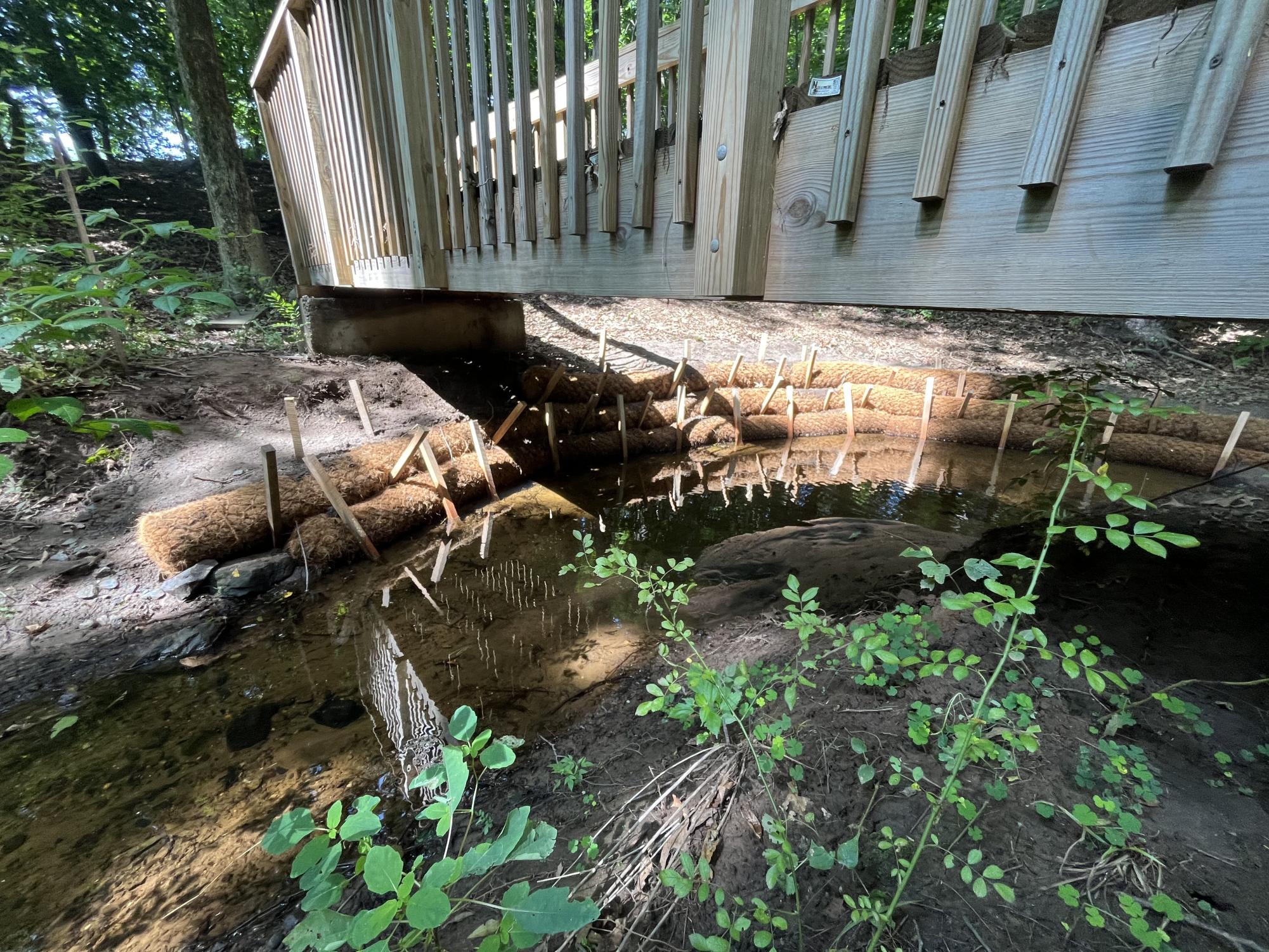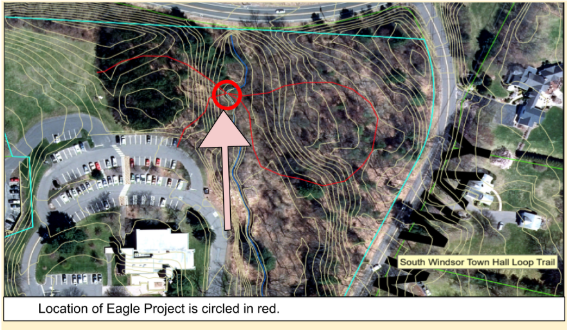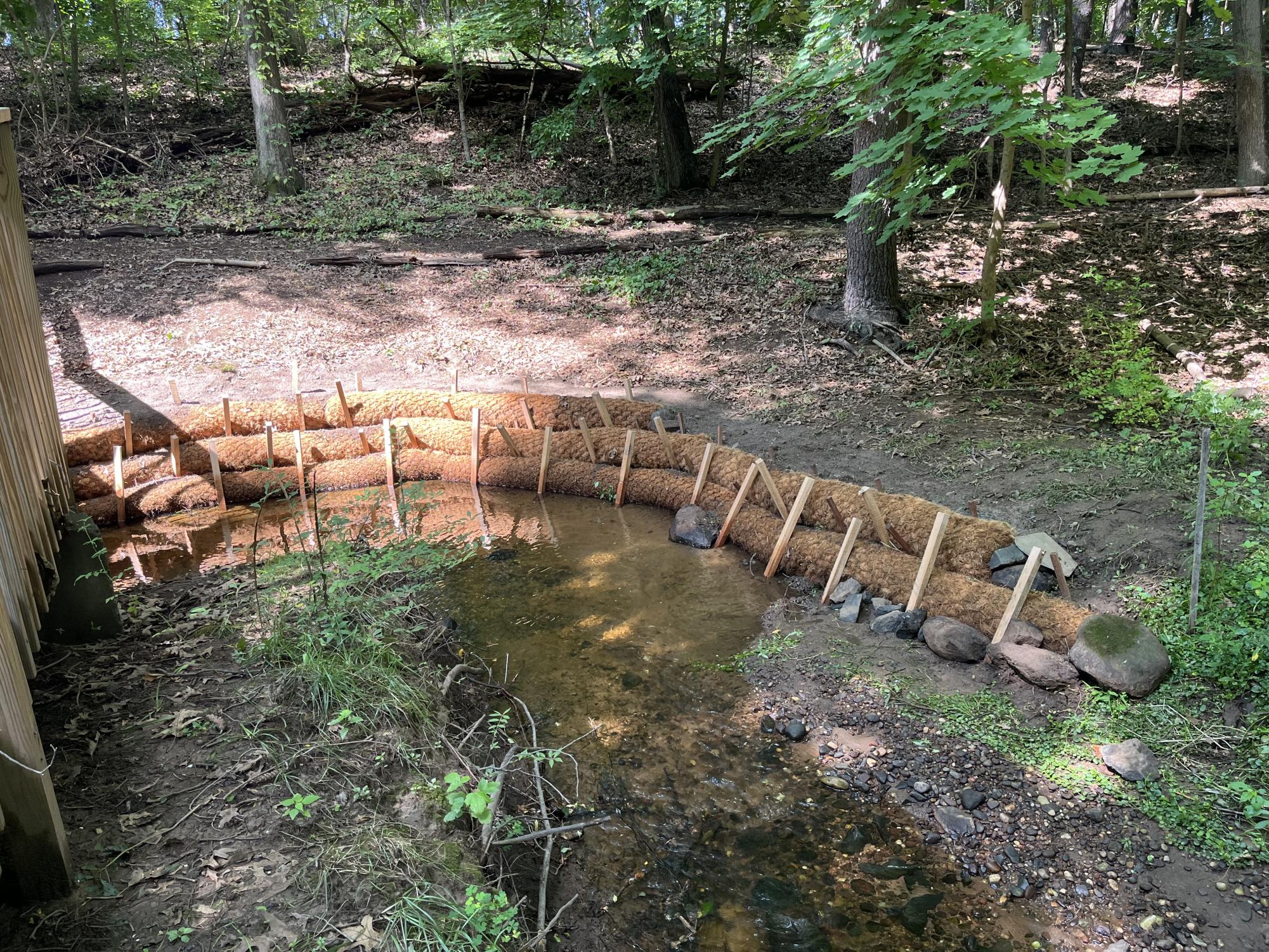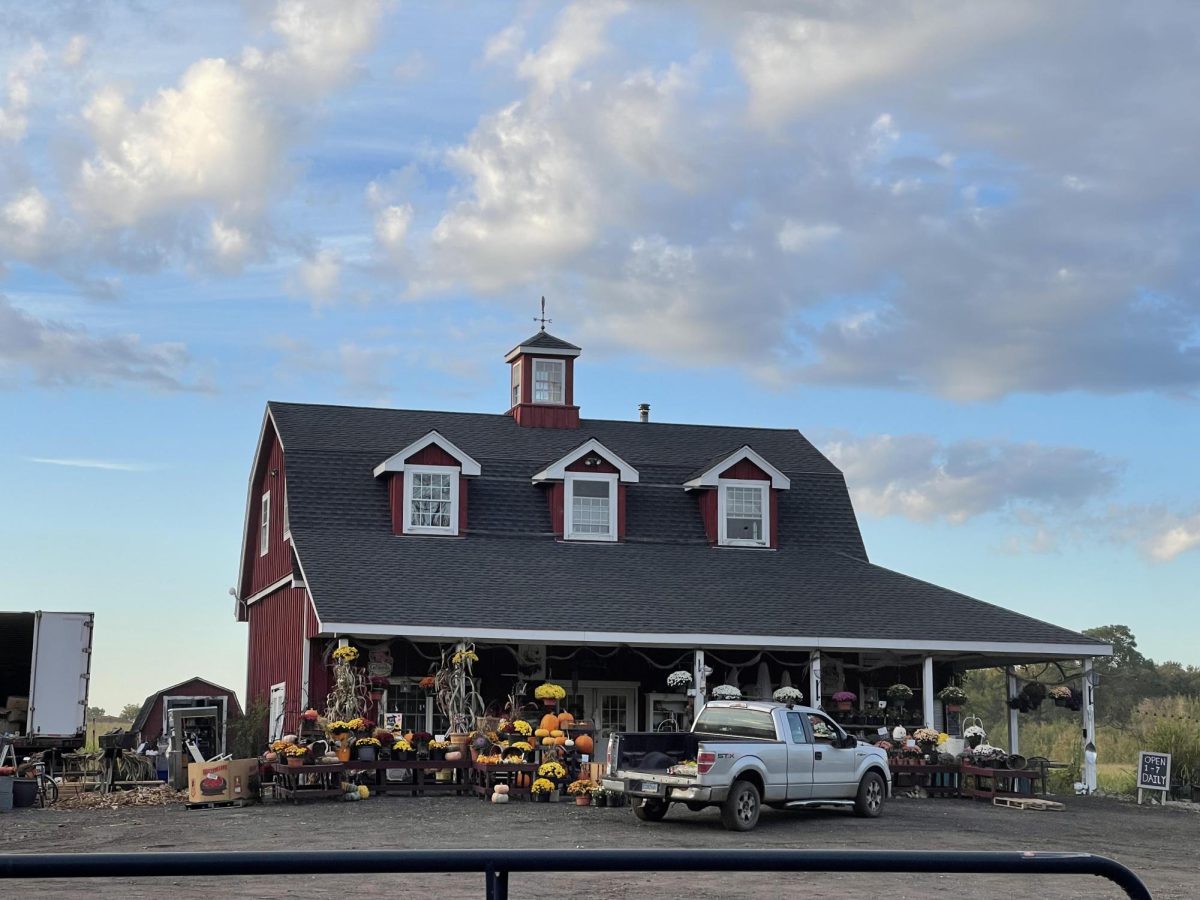SWHS senior Ben Zerella is an active member of Boy Scout Troop 880 who recently completed his Eagle Scout project. Zerella’s project focused on the installation of erosion control devices along the bank of Plum Gully Brook behind South Windsor’s town hall.
There have been multiple Eagle Scout projects involving Plum Gully Brook throughout the years, including the original marking of the trail and the bridge built across it.
“And the most recent project was Ben’s,” Vice Chair of the Inland Wetlands Agency/Conservation Commission and Scoutmaster Jack Phillips said.
Phillips worked closely with Zerella and served primarily as a technical advisor for his project. To target his goal of reducing erosion along the banks of Plum Gully Brook and with the help of his advisor, Zerella decided to employ coir logs.
Coir logs are an erosion control device made of a natural fiber extracted from the outer husks of coconuts. Each log is about 10 feet long, 12-20 inches in diameter and has a coir fiber core wrapped with coir twine. They are often put along the banks of brooks and streams to slow down the water, helping stabilize the banks and preventing big storms from washing sediment into the water.
According to recent mapping by FEMA, Plum Gully Brook is a special flood hazard area, making the soil along its banks more prone to erosion. Erosion along shorelines negatively affect wildlife and the health of the brook itself, as it results in habitat destruction and increased sediment within the water.
This poses a threat to aquatic life, as sediment can get lodged in their gills, suffocating them, and make the water too murky for sunlight to penetrate down to the aquatic plants that rely on it for photosynthesis.
Zerella’s plan aims to use a biodegradable material to help mitigate erosion and, therefore, prevent this ecosystem damage.
“With the coir logs in place on the banks the outcome will be stopping the increase of erosion,” Zerella said. “The bridge and the trail would be protected from any further flooding, which would prevent any expensive damages and repairs.”
Additionally, due to the porous nature of the coir logs, water and nutrients can be absorbed into their fibers, providing plants the opportunity to grow and small insects to use it as habitat.
During the course of Zerella’s now completed project, he worked with Autum Burke, the Environmental Planner and Conservation Officer for the town of South Windsor.
“I worked with him [Zerella] on submitting the application and creating a map showing where the work would be taking place,” Burke said. “However, I cannot take a lot of credit for this project, as Ben was very passionate and innovative for the actual installation of the coir logs.”
Coir logs biodegrade within 5 to 7 years. The nutrients released during their decomposition help to support plant life, which leads into another part of Zerella’s plan: planting berry bushes within the coir logs.
“The roots would eventually take the shape of the logs. After the average protection rate (5 – 7 years) is up, the roots of the bushes will eventually take on the role of reinforcing the banks,” Zerella said in his proposal.
This would provide a long-term solution to the erosion currently occurring along Plum Gully Brook.













